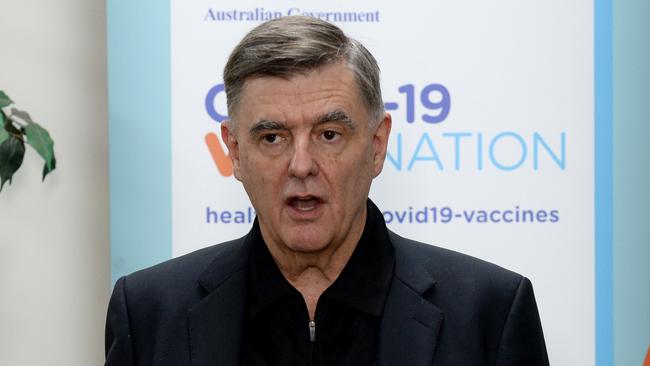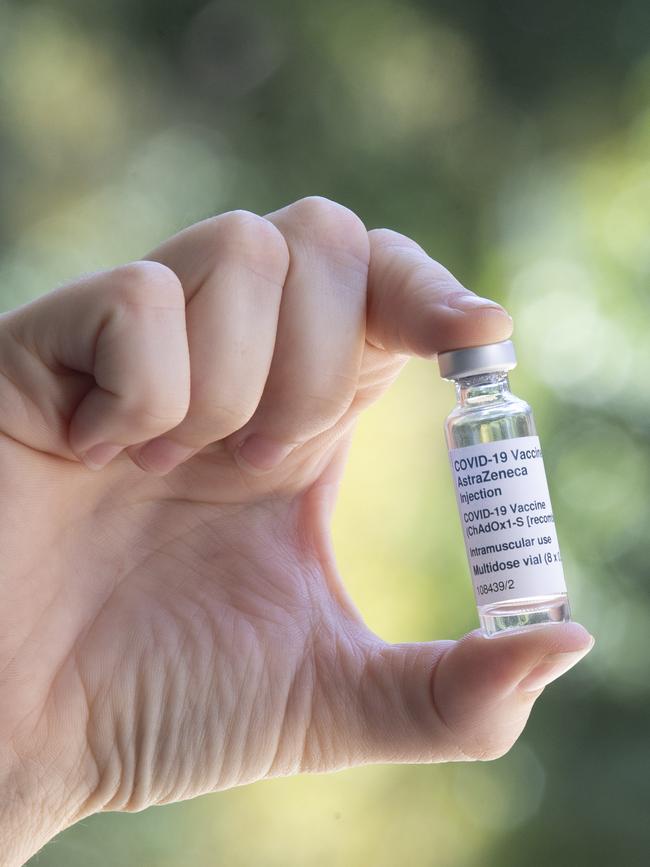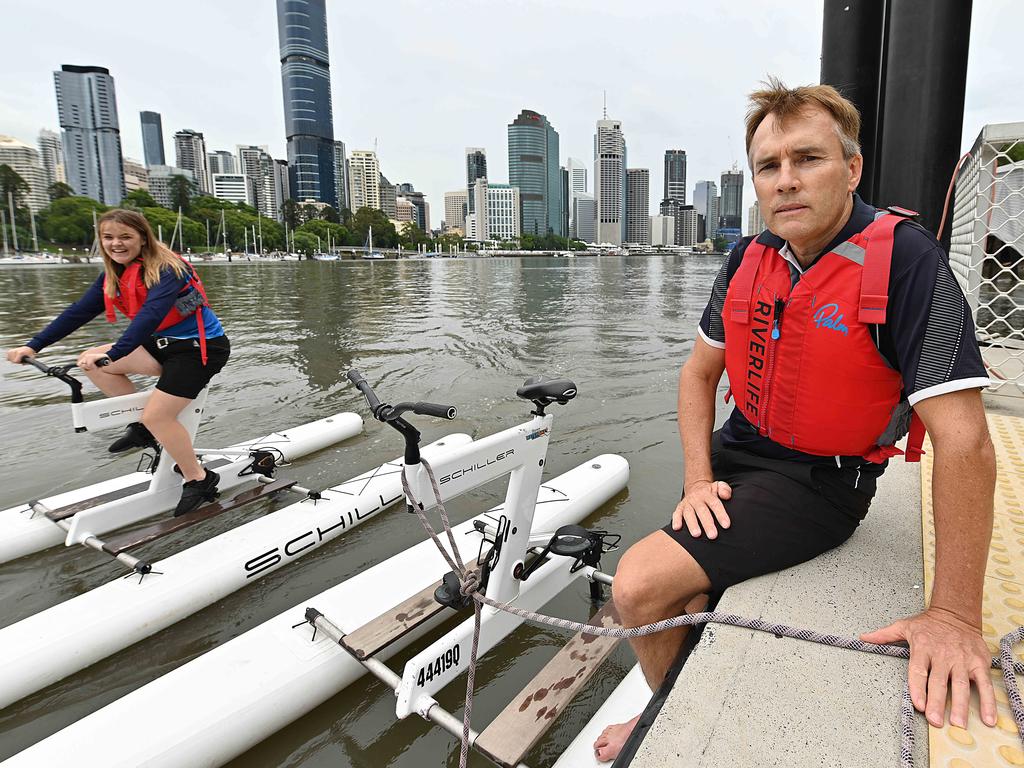Coronavirus: Dose of reality on vaccination target
A 3.1 million dose shortfall and a revolt from doctors over payments threatens to push COVID-19 vaccine program into 2022.

A 3.1 million dose shortfall in vaccine supplies and a revolt from doctors over inoculation payments threatens to push the completion of the nation’s COVID-19 immunisation program into the early part of next year.
Despite assurances from the federal government that the rollout was on track, Health Department secretary Brendan Murphy conceded Scott Morrison’s October target for the full rollout of the vaccine program was in jeopardy and some people might have to wait until 2022 to receive their second dose. “We don’t know if we will be able to deliver two doses by the end of October,” Professor Murphy told a Senate committee hearing on Thursday.
He said it was “impossible” to know when the first phase, originally due to be finalised by the end of March and targeted at those most exposed to the virus, would be completed.
Business groups warned that a slower rollout would have an impact on the economic recovery, but senior travel industry figure Graham Turner, chief executive of Flight Centre, said delays shouldn’t stop the reopening of international borders as long as the most vulnerable members of society had received the jab.
Only 125,000 doses have been administered nationwide compared with an initial target of four million doses by early April.
Australia is blaming supply interruptions from Europe — including Italy’s blocking the export of a shipment of 250,000 doses to Australia — for the slowness of the initial vaccine rollout.
Australia had been expecting 3.8 million doses of AstraZeneca vaccine from Europe in March, but only 700,000 have arrived. Although the supply of the Pfizer vaccine has been predictable the company has been only able to say Australia will receive its full allocation of 20 million doses by the end of the year.
Local production of the AstraZeneca vaccine at the rate of one million doses a week is expected to come online from March 22.
Doubt over the inoculation timeframe comes as GPs raise concerns that the October target will be unachievable, with practices predicting they will struggle to vaccinate the many hundreds of people each day that would be required to meet targets.
Most practices are operating at full capacity looking after patients. They say the only way to vaccinate large numbers of people will be to open clinics in the evenings and at weekends, but many GPs say it would be uneconomic for them to do so.
AMA president Omar Korshid said he believed having the population fully vaccinated by October was very unlikely.

“When we’re talking about having the population fully vaccinated by October, that will be very difficult to achieve,” Dr Korshid said. “Aiming to have the first dose administered by the end of October is more realistic.”
Dr Korshid acknowledged that many GP practices had concerns that they would not be able to administer vaccinations on top of ordinary patient appointments given the large number of doses that would need to be given.
Australian GP Alliance deputy chairman Mukesh Haikerwal called for block grants to be paid to doctors to enable them to pay staff outside normal hours.
“Once it is known in the community that a vaccine is available, the phones will literally melt in front of us with the calls coming through,” Dr Haikerwal said.
“But we are hammered at the moment by actual consultations in the practice, we’re going to have to put more staff on, we’re going to have to work after hours and at weekends. I think there needs to be recognition that this is a mammoth task and that the requirement for staff is significant.
“There is a shortfall between Medicare funding and the funding required for after-hours service when most of these services are going to have to be provided.”
NSW Premier Gladys Berejiklian said on Wednesday she wanted to “save months’’ by extending the role of the state’s 100 temporary vaccination hubs when the scheme moves from protecting the most vulnerable people to the general public.
Tasmania is also drawing up plans to supplement the GP program and Queensland also shares concerns about the speed at which the GP vaccinations can be administered.
Fears of a delay in the October timeframe have stoked business uncertainty and cast doubt over the timetable of border reopenings, upon which the aviation industry is heavily reliant.
Australian Chamber of Commerce and Industry acting chief executive Jenny Lambert said the outlook was “depressing” for businesses in tourism, events, the arts and international education if the rollout is delayed.
“These industries are desperate for the greater certainty that a vaccinated population will bring, not just to domestic borders but also international travel,” Ms Lambert said. “We would expect domestic border certainty to come a lot sooner than October, as the most vulnerable members of the population should be vaccinated over the next few months.”
Australian Industry Group chief executive Innes Willox said he wanted the government to stay the course on its vaccination timetable as the nation risked falling behind the rest of the world the longer its borders were closed.
“Given its complexity, the vaccine rollout was never going to run entirely smoothly and some delay was inevitable,” Mr Willox said. “The risk for Australia is that we get left behind as our competitors steal a march on us by getting their vaccination program completed much more efficiently while our businesses remain locked behind our borders months after much of the rest of the world gets on with life.”
Business Council of Australia chief executive Jennifer Westacott said that while the nation was better placed than most countries, snap border closures continued to be a strain on economic recovery. “We need to continue following the official health advice that has served us so well and stick to the planned, methodical rollout of the vaccine,” she said.
“What business would like to see is a national, consistent approach to reopening the economy linked to the vaccine rollout that avoids seriously damaging kneejerk border closures.”
ANZ senior economist Felicity Emmett said the trajectory of the economy depended on the virus remaining under control. Any delay in the rollout of the vaccine “raises the risk that another outbreak does delay the recovery and push out the return to full employment,” she said.
Anthony Albanese said the opposition would hold the Morrison government to account over its promise to vaccinate four million Australians by early April, despite revelations the target would be missed.
ADDITIONAL REPORTING: OLIVIA CAISLEY







To join the conversation, please log in. Don't have an account? Register
Join the conversation, you are commenting as Logout